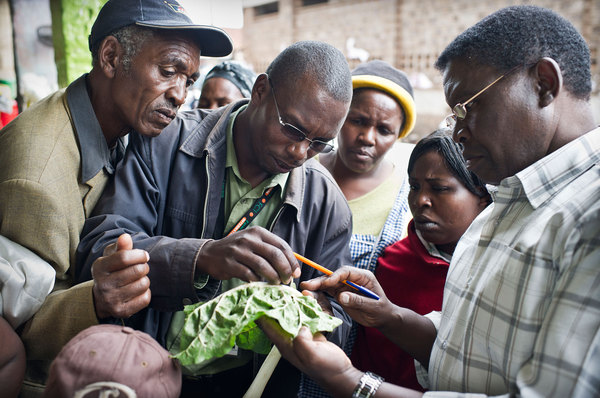How does communication and its technical content shape farmer responses to plant clinic advice?
A recent study led by CABI and published in International Journal of Agricultural Sustainability, explores how communication and its technical content shape farmers’ response to advice delivered at plant clinics. How willing were farmers to accept or reject the technologies recommended at plant clinic consultations? And what were the reasons? The research was carried out…
NextGen Cassava Improving Food Security in Sub-Saharan Africa
The Bill and Melinda Gates Foundation has paired with the UK Government to award the Next Generation (NextGen) Cassava Breeding Project $35 million with the aim of promoting the growth of cassava crops and to improve food security in Sub-Saharan Africa.
New coalition puts knowledge and skills into the hands of those who need it
CABI has joined forces with the ISEAL Integrated Pest Management (IPM) Coalition in the fight to implement better, less chemical-dependent, ways for farmers to manage agricultural pests and diseases that account for around 40% of lost crops worldwide. By linking with the Plantwise Knowledge Bank, the coalition aims to share knowledge on sustainable pest management…
Why intersectionality is key to women’s empowerment in agriculture
Women play a critical and potentially transformative role in agricultural growth in developing countries, but they face persistent obstacles and economic contraints which limit their full inclusion in agriculture. The FAO suggest that closing the gender gap in access to productive resources could increase agricultural output in the developing world by 2.5-4%, reducing the number…
Is it time for genetically modified bananas in Uganda?
Uganda is the world’s second largest producer of banana crop, with individuals consuming around 1.5 pounds of banana every day. Due to this major need for the success of banana crops within the country, plant pests and diseases are ever more threatening.
Lead battery soil contamination in Africa and the implications on plant and human Health
Globally, battery manufacturing and recycling plants have been identified as the major sources of soil lead contamination that have resulted in lead exposure to neighbouring communities via the accumulation of lead within plants. Lead is naturally found in soil in relatively low concentrations (10-50 mg/kg) in which it is taken up by plants via the…
E-plant clinics launched in Mozambique
E-plant clinics have been successfully launched in Mozambique this November, following two trainings and official launches. The trainings took place in a village called Tenga, Moamba near the capital city of Maputo (around 80 km), and in Morrumbene District near the city of Inhambane. Training was delivered in partnership with the National Directorate of Agricultural…
The disease that could change how we drink coffee
Reblogged from BBC Future Written by Jose Luis Penarredonda If you landed in Bogota in the 1960s, one of the first things you would have probably seen outside the airport was a giant billboard. In a slightly menacing tone, it said: “Coffee rust is the enemy. Don’t bring plant materials from abroad”. It was one…
Data democracy: a new age
The power of data over our lives is hard to overestimate. It governs how we understand and interact with the modern world, how it is measured and controlled. So, what is being done to utilise open data for global food security and nutrition?
The many P’s of partnership
Peace, partnerships, projects, production, perspectives, participation and passion to name just a few. These were all squeezed into a side event at CFS44, organised by CABI, entitled ‘How Cross-Sectoral Partnerships Help Smallholders Deliver a More Food Secure Future‘.




